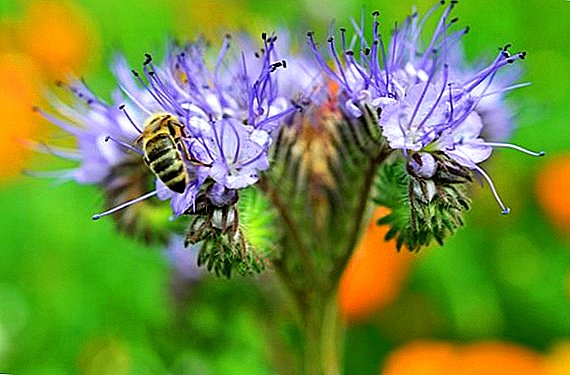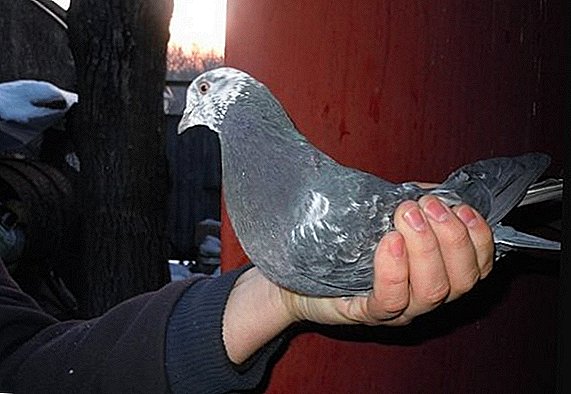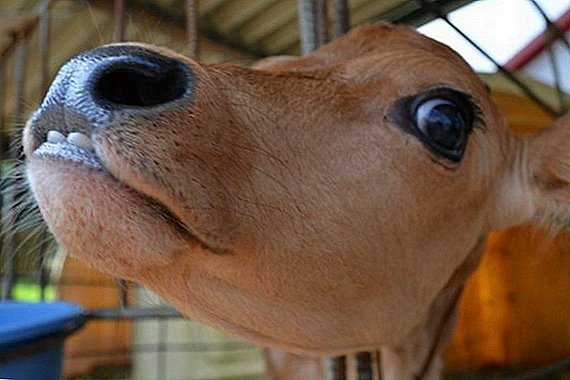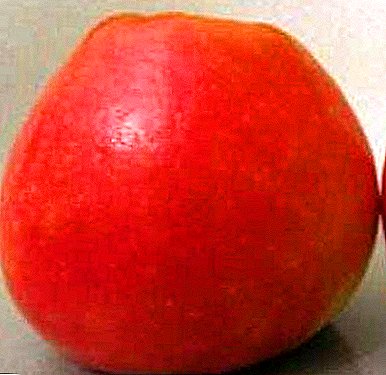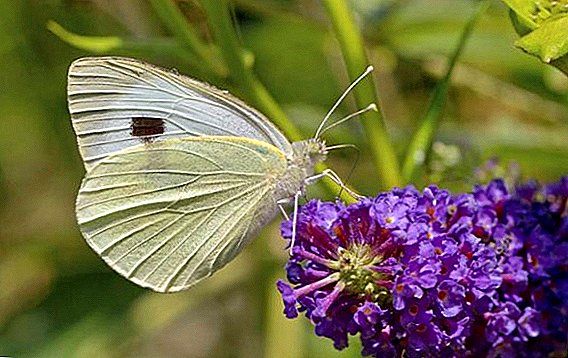 Pests - one of the four "horsemen of the apocalypse" garden, the other three: weeds, bad weather conditions and phytopole. And evil this time is hidden under the guise of a beautiful white butterfly cabbage, from which children are delighted and adults who are not connected with the affairs of the dacha. It is fair to say that it’s not the adult insect that harms the vegetables, but its caterpillars, but this doesn’t change the state of things, and if you don’t intend to share your meal with these cabbage eaters, you should learn a little about the enemy and learn how to combat it. .
Pests - one of the four "horsemen of the apocalypse" garden, the other three: weeds, bad weather conditions and phytopole. And evil this time is hidden under the guise of a beautiful white butterfly cabbage, from which children are delighted and adults who are not connected with the affairs of the dacha. It is fair to say that it’s not the adult insect that harms the vegetables, but its caterpillars, but this doesn’t change the state of things, and if you don’t intend to share your meal with these cabbage eaters, you should learn a little about the enemy and learn how to combat it. .
Pest description
Butterfly Cabbage - is well known to the overwhelming majority of the adult population of the planet and hardly needs an additional description. Delving into biology, you can add that a cute pest belongs to the family of whiteflies and does not always live next to humans, but also in meadows, on forest edges, along trails.
The adult guise of an insect or imago (butterfly) is absolutely harmless for agriculture and feeds, as befits wonderful creatures, the nectar of flowers, most often dandelions, alfalfa or Sivec. What can not be said about its intermediate form of development - the caterpillar. It is a caterpillar that feeds on the juicy pulp of white cabbage, leaving huge holes in the sheets at the place of its meal.
What can not be said about its intermediate form of development - the caterpillar. It is a caterpillar that feeds on the juicy pulp of white cabbage, leaving huge holes in the sheets at the place of its meal.
Learn how to deal with other pests of garden and garden crops: aphids, gold-eyed, thrips, shovel, May beetles, wasps, ants, bark beetle, weevil, ground beetle.
The caterpillar of the cabbage butterfly is relatively small, as can be seen in the photo below — a rather beautiful color: a greenish-blue back and a yellow belly. Her body is covered with black hairs, and along the body on both sides stretches a series of black dots. These caterpillars prefer to feed at the lower part of the plant, since the humidity is higher to the soil and the air temperature is lower. 
Important! The fact is little known, but the moth caterpillars are rather poisonous. For humans, their toxin is not dangerous and causes allergies or skin irritation, but the deaths of birds that have accidentally swallowed these insects have been fixed.
Life cycle features
The length of the life cycle of a whitefish depends on the temperature conditions: the more favorable they are, the faster the insect develops, if conditions are unfavorable, then ontogenesis can be delayed for a decent period. For example, when the air temperature is below 20 ° C, the process of turning a caterpillar into an imago can drag on three times (from 13 to 38 days)!  On average, with a stable temperature of 20-26 ° C, the development from egg to imago and the natural death of the insect takes 30-75 days, during which the cabbage butterfly goes through 3 transformations and 4 molts.
On average, with a stable temperature of 20-26 ° C, the development from egg to imago and the natural death of the insect takes 30-75 days, during which the cabbage butterfly goes through 3 transformations and 4 molts.
- The stage of the egg. After mating, an adult female lays from 200 to 300 fertilized eggs on the lower side of the head to protect them from drying out and possible natural enemies. Eggs are lemon yellow in color; elongated, oval shape and size of about 1.25 mm. Depending on the air temperature, incubation takes from 5 to 16 days.
- Caterpillar stage Young, before the first molt, the caterpillars differ from their subsequent incarnations: they reach only 1.7 mm in length. They have a light green color, which serves as an excellent disguise and makes them invisible on the cabbage heads. Also, until the second molt, the insects keep themselves in a heap, feed in one place and hardly move from the spot.
- 1, 2 molt. At this time, the caterpillars actively add in size, but in other respects remain morphologically unchanged. During this period, insects still do not cause significant damage to cabbage, being content with scraping the upper part of the pulp at the base of the leaf.
- 3.4 moult. After the third molt, the caterpillar significantly adds in size, acquires a green-yellow color and becomes able to move over long distances, destroying more and more cabbage. At this stage, the damage caused becomes more noticeable: through holes appear on the sheets, the vegetable is contaminated with pest excrement. Sometimes, with a strong defeat, only gnawed streaks remain from the external sheets of cabbage.
- Baby doll After the last, fourth molt, the caterpillar reaches its maximum size (50-60 mm.) And after being in such a state for 7-10 days it begins to pupate. In May / June of the following year, adult individuals appear from pupae. The period of holometabolism (the state of the pupa) in the butterflies lasts 9-30 days. In warm regions, from 2 to 4 generations of butterflies can be bred in one season. This is what a cabbage-hat doll looks like:
Did you know? Some butterflies do not feed at all - they simply do not have a mouth! And these insects live at the expense of the energy accumulated in the caterpillar stage.

How to detect a pest and what is its danger?
To identify the pest in the early stages of ontogenesis is possible only with careful examination of the root part of the cabbage heads. Inspect the seedlings can begin in the middle of June. At this time, the need to focus on the detection and destruction of clutches.
This is how a moth house looks like. Towards the middle of June, the enemy will look like this:  Caterpillars can also be detected during the inspection, since at this stage of their development they do not cause significant damage to the plant and it looks healthy. Caterpillars after 3-4 molts are the most dangerous for future harvest. These pests are extremely voracious and the affected vegetable is very clearly visible, and the presence of insects is beyond doubt. Head affected by white flowers:
Caterpillars can also be detected during the inspection, since at this stage of their development they do not cause significant damage to the plant and it looks healthy. Caterpillars after 3-4 molts are the most dangerous for future harvest. These pests are extremely voracious and the affected vegetable is very clearly visible, and the presence of insects is beyond doubt. Head affected by white flowers:  Since at this time the caterpillars become the most active, you can easily see them crawling freely throughout the plant:
Since at this time the caterpillars become the most active, you can easily see them crawling freely throughout the plant:  Also, one of the forerunners or early signs of the presence of cabbage may be flying above the cultures of adults of these insects.
Also, one of the forerunners or early signs of the presence of cabbage may be flying above the cultures of adults of these insects.
Harm done
With extensive lesions, whitefly caterpillars can significantly reduce the quality of the crop, and even make it completely unsuitable for consumption.
Damage caused by their mandibles results in loss of moisture accumulated by the vegetable. Considering the peculiarities of cabbage vegetation, for which the air temperature of about 20 ° C is optimal, summer heat and increased, due to damage, evaporation of moisture can cause growth to stop, lose its qualities, or even kill the plant. Symptoms of the situation described: yellowing, loss of elasticity, and then complete drying of the sheets.  But the loss of moisture is not the only danger. Damage opens the way for various pathogenic bacteria and fungi, which are sure to finish the work started by the pests. “Wounded” vegetables become defenseless against such diseases as gray mold, punctate bacteriosis / necrosis and downy mildew (peronosporiosis).
But the loss of moisture is not the only danger. Damage opens the way for various pathogenic bacteria and fungi, which are sure to finish the work started by the pests. “Wounded” vegetables become defenseless against such diseases as gray mold, punctate bacteriosis / necrosis and downy mildew (peronosporiosis).
The most common disease of cabbage is kila disease.

How to fight?
Fight against garden and garden pests - a moment that causes internal dissonance in any gardener. Indeed, on the one hand, most of us in our own garden attract the opportunity to get an environmentally friendly, 100% healthy product. And when the need arises to use poisons, the worm of doubt begins to undermine the pathos of healthy eating with “clean” products.
Fortunately, for the destruction of cabbage caterpillars was developed, both in laboratories and by the gardeners themselves, many methods of struggle. It is advisable to consider the most effective and safe for human health of them.
Preparations
The confidence of gardeners were able to win such insecticides as Fitoverm, Aktellik and Lepidotsid.
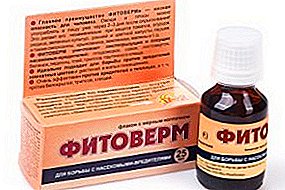 Fitoderm - a drug of biological origin. Its active ingredient is the vital activity products of bacteria of normal soil inhabitants. The drug affects the pest's nervous system, causing paralysis and then death. Phytoverm has a number of advantages, among which are: a) a wide spectrum of action (it also fights with Colorado, Medvedka, aphids, leafworms, phyto-mites); b) it is safe for humans, since it does not accumulate in the tissues of the plant and is rapidly destroyed in soil and water. Processing means it is advisable to carry on the fact of the presence of caterpillars, as it is effective only against gnawing and sucking pests. The Fitoverma's action will be noticeable already after 6-8 hours from the moment of treatment. Of the minuses it can be noted that despite the wide range of actions, the tool can leave burns on some crops, but it is safe for cabbage. Use according to the instructions.
Fitoderm - a drug of biological origin. Its active ingredient is the vital activity products of bacteria of normal soil inhabitants. The drug affects the pest's nervous system, causing paralysis and then death. Phytoverm has a number of advantages, among which are: a) a wide spectrum of action (it also fights with Colorado, Medvedka, aphids, leafworms, phyto-mites); b) it is safe for humans, since it does not accumulate in the tissues of the plant and is rapidly destroyed in soil and water. Processing means it is advisable to carry on the fact of the presence of caterpillars, as it is effective only against gnawing and sucking pests. The Fitoverma's action will be noticeable already after 6-8 hours from the moment of treatment. Of the minuses it can be noted that despite the wide range of actions, the tool can leave burns on some crops, but it is safe for cabbage. Use according to the instructions. Actellic - organophosphate insecticide. Spectrum of action is the same as Fitoverma. Retains a protective effect for 3-4 weeks after treatment. With the right dosage, it is non-toxic. Quickly collapses after falling on the surface of the sheet or soil. The effect of the application occurs in the period from several minutes to 1 hour after treatment. Use according to the instructions.
Actellic - organophosphate insecticide. Spectrum of action is the same as Fitoverma. Retains a protective effect for 3-4 weeks after treatment. With the right dosage, it is non-toxic. Quickly collapses after falling on the surface of the sheet or soil. The effect of the application occurs in the period from several minutes to 1 hour after treatment. Use according to the instructions.- Lepidocid - a drug of biological origin. Insecticidal action is very selective, it applies only to certain types of insects due to their morphological features. Active ingredient - spores and isolated crystals of soil bacteria Bacillus thuringiensis.
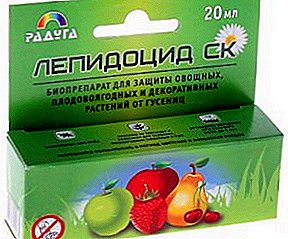 In the cytoplasm of these gram-positive bacteria, there is a protein-protoxin, which is soluble only in the intestines of certain insect species. Absolutely safe for humans and all vertebrates. as needed, it is possible to process at each of the growing season. Follow the instructions.
In the cytoplasm of these gram-positive bacteria, there is a protein-protoxin, which is soluble only in the intestines of certain insect species. Absolutely safe for humans and all vertebrates. as needed, it is possible to process at each of the growing season. Follow the instructions.
Important! Methods of control must be selected in accordance with the expected stage of development of insects. For example, it makes no sense to spray crops if pests have not yet emerged from eggs or have already pupated.
Biological methods and folk remedies
Biological methods include the use of organic insecticides and entomophages. And if with biological insecticides everything is more or less clear, then entomophages are a new concept in the domestic garden economy.
Entomophages are insects, natural enemies of garden pests. And here my grandmother's stories are recalled about how useful a ladybug is, because it eats aphids. Indeed, this method of struggle seems to be ideal, because it will avoid the cost of poisons, and it is morally much easier to put a “clean” product on the plate. The catch is how to show these sweet little animals the grassy places with an abundance of caterpillars? There is a way!
Speaking of the natural enemies of the cabbage, you can call the rider Pimpla (Pimpla Fabricius).  Studies using these riders, conducted in the Kiev region in 1944, showed the almost complete destruction of whitefish (95-98%). Adults are attracted to nectar-bearing plants, so that it is advisable to plant dill and other flowering crops near the cabbage. Wormwood, mint and tansy will scare away butterflies.
Studies using these riders, conducted in the Kiev region in 1944, showed the almost complete destruction of whitefish (95-98%). Adults are attracted to nectar-bearing plants, so that it is advisable to plant dill and other flowering crops near the cabbage. Wormwood, mint and tansy will scare away butterflies.
Folk methods also popular.
- Spraying vinegar solution. 1 tbsp. l / 10 l. water. Make a solution of the desired concentration and spray the cabbage. Flying insects are repelled by a sharp smell, and chewing is a high acidity.
- Table soda + laundry soap. At 4 liters of water we take 1 tbsp. l baking soda and 1 tbsp. l rubbed households soap. Dissolve until smooth. In addition to cabbage, the tool is struggling with pests such as aphids and garden fleas.
- Attraction of predators. Biological rapid method to combat caterpillars. Spraying sweet water will attract the wasps, who are their natural enemies.
- Hand picking. Well, no one has canceled such a method of struggle as mechanical destruction. With all the apparent absurdity, in some cases, manual collection is the most effective means. And at the beginning of the season, when the masonry just appeared, the only possible.




Did you know? The feeling of the territory is not only characteristic of animals. The butterfly will not settle in the place where the other has previously settled. Seeing such a pattern, some use egg shells, impaled on a stick, which butterflies perceive as self-similar.
Prevention
Going deeper, one can be convinced of the vastness of the experience and activities of gardeners-gardeners who publish dozens of preventive methods designed to avoid whitefish damage. Proceeding from the fact that not everyone possesses special structures and equipment for the implementation of complex preventive schemes, it is possible to distinguish several accessible, but no less effective (and even mandatory) ones.
- Loosening the soil. It is important to dig and loosen the soil in the fall after harvest and before planting a new one.
- Burning down from the fall of landing sites. Ash fertilizes the soil, destroys weed seeds and pupae of cabbages, which may remain anywhere in the planting area.
- Do not allow the growth of cruciferous weeds, which will become an additional focus for the reproduction of pests.
- Differentiation of landing sites. It’s a well-known rule that it’s impossible to set aside a certain piece of land for one crop for a long-term period. This leads to the accumulation of specific diseases, bacteria and pests.
 Proper gardening and sensible pest management will do more than half of the work associated with growing vegetables for you. Act wisely and good luck is guaranteed!
Proper gardening and sensible pest management will do more than half of the work associated with growing vegetables for you. Act wisely and good luck is guaranteed!

 Fitoderm - a drug of biological origin. Its active ingredient is the vital activity products of bacteria of normal soil inhabitants. The drug affects the pest's nervous system, causing paralysis and then death. Phytoverm has a number of advantages, among which are: a) a wide spectrum of action (it also fights with Colorado, Medvedka, aphids, leafworms, phyto-mites); b) it is safe for humans, since it does not accumulate in the tissues of the plant and is rapidly destroyed in soil and water. Processing means it is advisable to carry on the fact of the presence of caterpillars, as it is effective only against gnawing and sucking pests. The Fitoverma's action will be noticeable already after 6-8 hours from the moment of treatment. Of the minuses it can be noted that despite the wide range of actions, the tool can leave burns on some crops, but it is safe for cabbage. Use according to the instructions.
Fitoderm - a drug of biological origin. Its active ingredient is the vital activity products of bacteria of normal soil inhabitants. The drug affects the pest's nervous system, causing paralysis and then death. Phytoverm has a number of advantages, among which are: a) a wide spectrum of action (it also fights with Colorado, Medvedka, aphids, leafworms, phyto-mites); b) it is safe for humans, since it does not accumulate in the tissues of the plant and is rapidly destroyed in soil and water. Processing means it is advisable to carry on the fact of the presence of caterpillars, as it is effective only against gnawing and sucking pests. The Fitoverma's action will be noticeable already after 6-8 hours from the moment of treatment. Of the minuses it can be noted that despite the wide range of actions, the tool can leave burns on some crops, but it is safe for cabbage. Use according to the instructions. Actellic - organophosphate insecticide. Spectrum of action is the same as Fitoverma. Retains a protective effect for 3-4 weeks after treatment. With the right dosage, it is non-toxic. Quickly collapses after falling on the surface of the sheet or soil. The effect of the application occurs in the period from several minutes to 1 hour after treatment. Use according to the instructions.
Actellic - organophosphate insecticide. Spectrum of action is the same as Fitoverma. Retains a protective effect for 3-4 weeks after treatment. With the right dosage, it is non-toxic. Quickly collapses after falling on the surface of the sheet or soil. The effect of the application occurs in the period from several minutes to 1 hour after treatment. Use according to the instructions. In the cytoplasm of these gram-positive bacteria, there is a protein-protoxin, which is soluble only in the intestines of certain insect species. Absolutely safe for humans and all vertebrates. as needed, it is possible to process at each of the growing season. Follow the instructions.
In the cytoplasm of these gram-positive bacteria, there is a protein-protoxin, which is soluble only in the intestines of certain insect species. Absolutely safe for humans and all vertebrates. as needed, it is possible to process at each of the growing season. Follow the instructions.